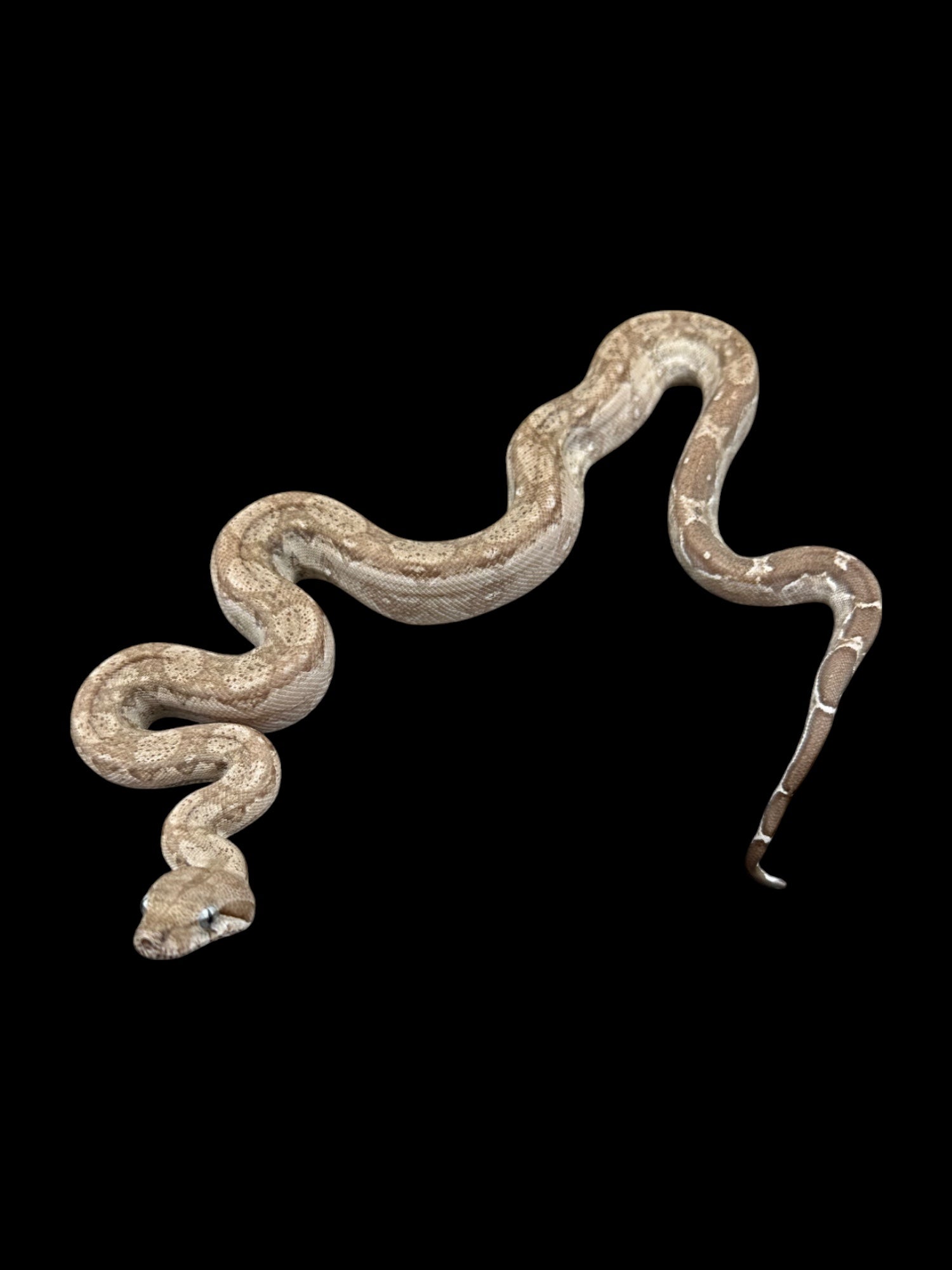Photo Disclaimer
Description
Boa Constrictor Imperator (BCI)
Boa constrictor imperator
Morph/Lineage: Burk’s T+ Albino Type 2 Anery “T+ Snow” (Nicaraguan Locality)
Species Overview
-
Size: BCI typically reach 6–8 feet (1.8–2.4 m) in length, though Nicaraguan localities are smaller, averaging 4–6 feet (1.2–1.8 m). Adults are more compact-bodied compared to Colombian BCIs.
-
Appearance: This morph is known as the T+ Snow Boa, combining the Burk’s T+ Albino and Type 2 Anery traits. The result is a pale boa with silvery-grey, caramel, and golden hues instead of the stark white typical of standard Snows. The Nicaraguan locality influence enhances contrast and keeps the snake smaller and stockier than Colombian lineages.
-
Distribution: The natural Boa constrictor imperator is native to Central and South America, with the Nicaraguan population recognized for its smaller size and darker appearance.
-
Habitat: In the wild, they inhabit lowland tropical forests, scrublands, and river edges, often adapting to disturbed habitats.
-
Behaviour: Primarily nocturnal ambush predators feeding on small mammals, birds, and reptiles. Though capable climbers and swimmers, adults are mainly terrestrial.
Captive Care
-
Enclosure: A naturalistic enclosure is recommended, sized for their smaller adult length. A 4′ × 2′ × 2′ setup is usually sufficient, furnished with branches, hides, cork bark, and foliage. Bioactive enclosures with live plants and leaf litter provide enrichment and help regulate humidity.
-
Temperature & Humidity: Maintain a gradient of 80–85°F (27–29°C) with a basking area of 88–92°F (31–33°C). Nighttime drops to 75–78°F (24–26°C) are acceptable. Humidity should stay between 55–70%, with a large water dish available for soaking.
-
Diet: Juveniles feed every 7–10 days on small rodents; adults eat every 14–21 days. Due to their smaller size, prey should be portioned carefully to avoid overfeeding.
-
Behaviour in Captivity: Nicaraguan BCIs are hardy boas with strong feeding responses. With calm, consistent care, most individuals tolerate handling well.
- Special Considerations: While selective breeding has produced a wide variety of morphs, their core care requirements remain identical to standard Boa constrictor imperator.
Genetics/Lineage Note
The Burk’s T+ Albino Type 2 Anery “T+ Snow” (Nicaraguan) morph involves:
-
Burk’s T+ Albino (recessive): A Tyrosinase Positive Albino variant that reduces melanin, producing rich caramel and golden tones instead of bright yellow/white.
-
Type 2 Anery (recessive): Removes red pigmentation, creating grey, black, and silver tones.
-
T+ Snow (double recessive): When Burk’s T+ Albino and Type 2 Anery combine, the result is the T+ Snow — a pale, silvery boa with warm undertones, distinct from standard “white-out” Snows.
-
Nicaraguan Locality: Smaller-bodied boas (4–6 feet adult length), darker base colouration, and higher pattern contrast.
This morph is prized for its unique colour palette and more manageable size compared to larger boa lineages.

